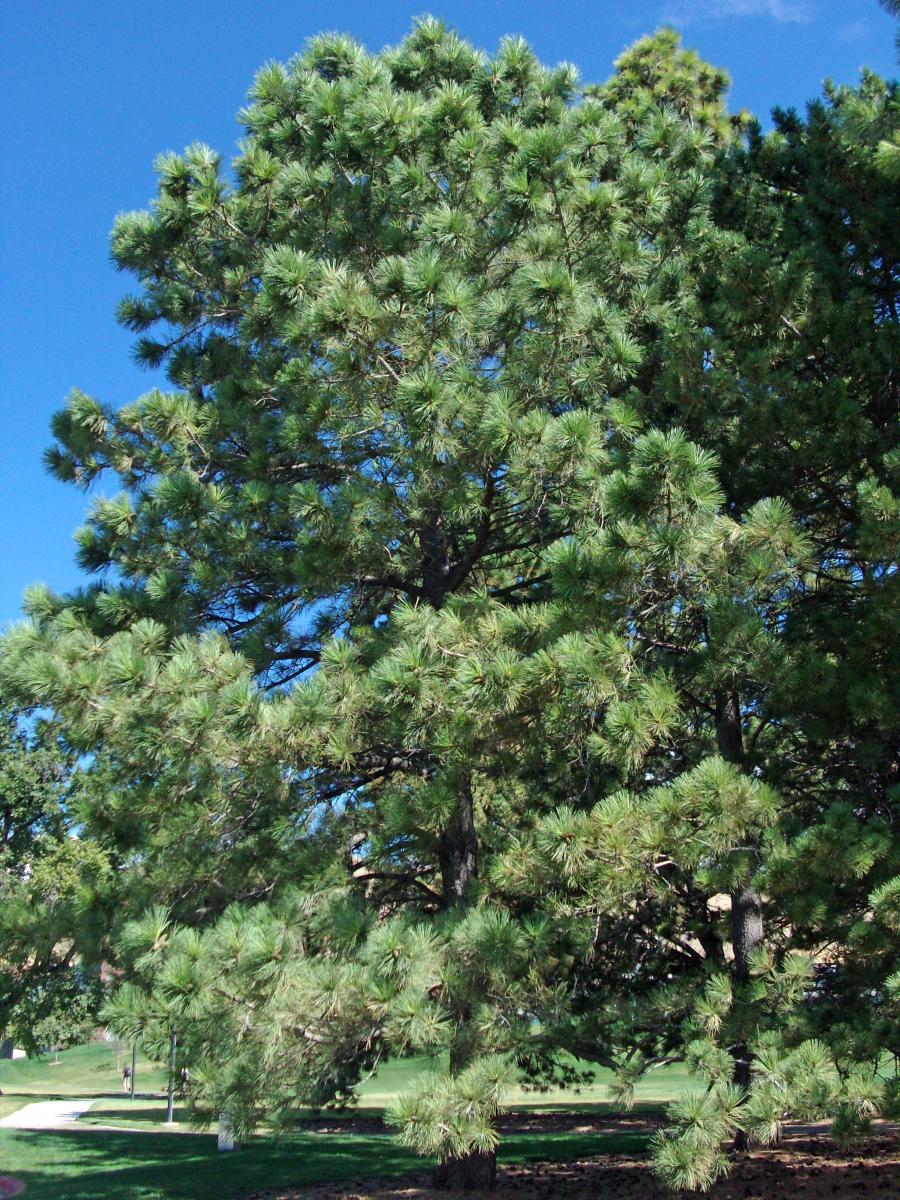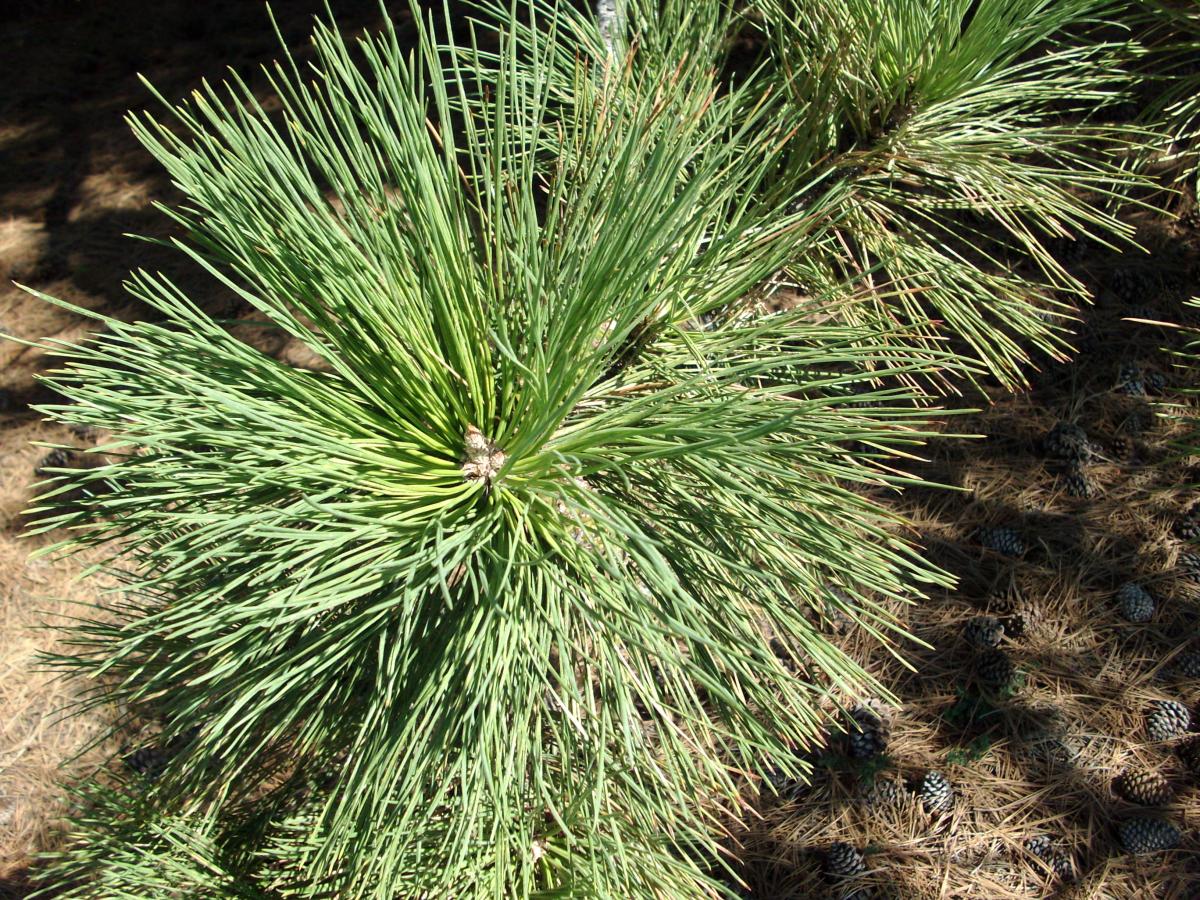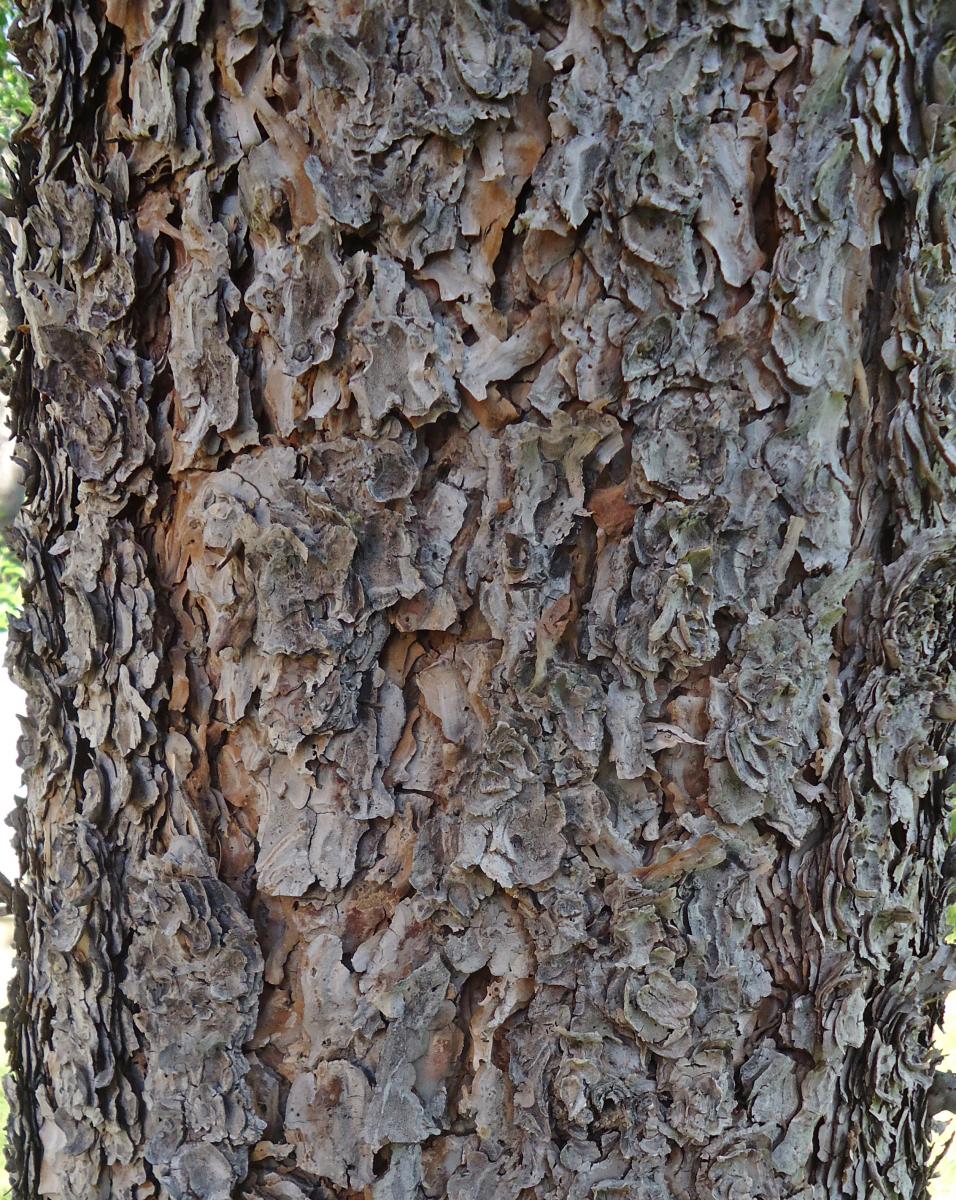Ponderosa Pine




Pinus ponderosa
Leaves: Evergreen. Long needles 6 to 10 inches in groups of 2 and 3 and are slightly curved. Dark green or yellowish green color.
Bark/Twigs: Younger bark is dark brown, almost black. Older scaly bark develops fissures of oranges and reds. Older bark uniquely smells like vanilla, especially on hot days or after rain.
Flowers/Fruit: Inconspicuous flowers in spring. Male cones are orange and short. Woody female cones are egg-shaped, 3 to 6 inches long, 1½ to 2 inches wide, and reddish brown. Each scale on the cone is armed with a short, sharp spine or prickle on the tip.
Mature size and shape: Large. 60 to 80 feet high x 25 to 30 feet wide. Does grow taller, particularly in its native habitat. Pyramidal shape. Top becomes more rounded and irregular with age.
General information/special features: Native to mountainous areas in southern two-thirds of Utah. It is also one of America's most abundant tree species and was used extensively by the Native Americans. Lewis and Clark used it to make canoes after they crossed the Rocky Mountains. Plant in full sun. Does not perform well in shade. Grows in most types of soil. Moist, well-drained soil is best. Resists fire. Drought resistant.
Landscape use and maintenance: Good evergreen shade tree. Can be used as a group planting or single tree in large areas. May be too large for some residential landscapes. Makes a fair screen or windbreak. Excellent tree for timber. Average growing rate. Low maintenance.
USDA Hardiness Zone: 3 to 7
Family/Origin: Pinaceae – Pine. Native to mountainous areas in southern ⅔ of Utah and throughout the West.
Campus Use: Somewhat common. Can be found north east of the Erying Chemistry Building (Bld 85) or east of the Hunstman Sports Center (Bld 90).
